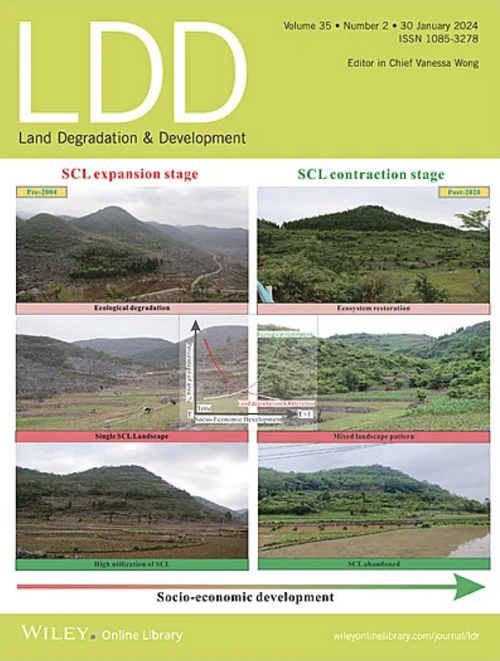Assessing Surface Water Hydrological Connectivity and Spatiotemporal Evolution in Xinjiang (2000–2020)
IF 3.6
2区 农林科学
Q2 ENVIRONMENTAL SCIENCES
引用次数: 0
Abstract
Assessing hydrological connectivity is crucial for maintaining the health and integrity of wetland and river‐lake ecosystems in arid regions as it plays a key role in watershed ecological balance and sustainable development. We utilized the Joint Research Center's global surface water dataset. We combined these data with connectivity indices and circuit theory to analyze the hydrological connectivity and spatiotemporal evolution of surface water in Xinjiang from 2000 to 2020. We determined that an increase in surface water area generally enhances regional hydrological connectivity. However, the fragmentation of water bodies may affect the quality of the potential connectivity by increasing the number of connecting pathways. The expansion and fragmentation of water patches alter their role in hydrological connectivity, with patches near large catchment areas often serving as critical connection points. Additionally, we found that the combined impacts of climate change and human activities led to an increase in the number of ecological corridors in Xinjiang from 427 in 2000 to 527 in 2020, with surrounding ecological pinch points and barrier areas showing increasing trends. This study provides new evidence for the spatiotemporal evolution of hydrological connectivity in Xinjiang from 2000 to 2020 and identifies priority areas for protecting and enhancing hydrological network connectivity. Our results provide a scientific basis for optimizing the conservation framework of river‐lake networks in Xinjiang, maintaining the integrity of aquatic ecosystems, and accelerating the environmental restoration of river‐lake networks.求助全文
约1分钟内获得全文
求助全文
来源期刊

Land Degradation & Development
农林科学-环境科学
CiteScore
7.70
自引率
8.50%
发文量
379
审稿时长
5.5 months
期刊介绍:
Land Degradation & Development is an international journal which seeks to promote rational study of the recognition, monitoring, control and rehabilitation of degradation in terrestrial environments. The journal focuses on:
- what land degradation is;
- what causes land degradation;
- the impacts of land degradation
- the scale of land degradation;
- the history, current status or future trends of land degradation;
- avoidance, mitigation and control of land degradation;
- remedial actions to rehabilitate or restore degraded land;
- sustainable land management.
 求助内容:
求助内容: 应助结果提醒方式:
应助结果提醒方式:


